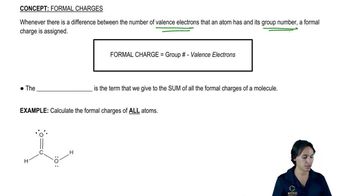Draw the missing lone-pair electrons and assign the missing formal charges for the following:
c.
d.
 Verified step by step guidance
Verified step by step guidance Verified video answer for a similar problem:
Verified video answer for a similar problem:



 1:34m
1:34mMaster Calculating formal and net charge. with a bite sized video explanation from Johnny
Start learning